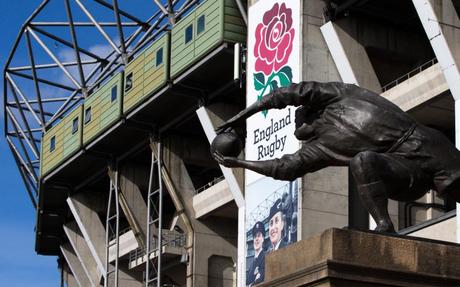
The first and only stunning mention of the Rugby Football Union's proposed exit option from Twickenham is tucked away on page 67 of the 69-page Twickenham Stadium Masterplan Program, seen by Telegraph Sports.
The document discusses existing plans for "a variety of projects that together would deliver a new, improved experience for users of Twickenham Stadium". Below, Telegraph Sport dissects the report.
We leave Twickenham and go to Wembley
The option to leave is off the table, the report says, with the Masterplan Program Team no longer seeking to raise the possibility that "the RFU would explore the potential of divesting Twickenham Stadium and acquiring a 50 per cent share of Wembley stadium to buy".
That decision followed a recommendation approved by the RFU board in March last year to keep the 'Leave' option in reserve. The RFU had not contacted the Football Association about a possible agreement and noted that any formal agreement with the Football Association had been postponed "until further clarity on the feasibility of the 'Remain' option and the views of the licensing authority has been obtained" .
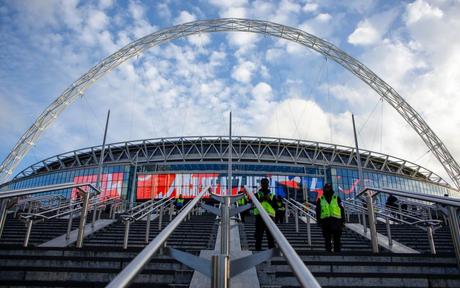
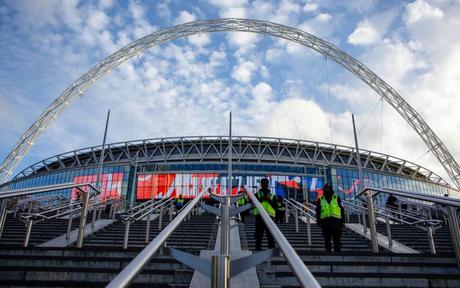
Yet the logistical and historical implications of such a move are fascinating, including the idea that the RFU would sell and move away from the plot of land bought in 1907 for £5,500, 12 shillings and six pence - around £432,000 in today's terms. money.
England have not played a rugby match at Wembley as a home team since defeating Canada in 1992, while of course they faced Wales there in 1999 during the construction of the Principality Stadium. It would have been truly extraordinary to have permanently moved English rugby some 11.5 miles north, even before the FA had considered the possibility of sharing the home ground of English football.
£663 million plans to stay
Instead, the RFU has chosen the option to remain, which is not cheap, and even acknowledges that the full Preferred Way Forward (PWF) is "unaffordable".
Instead, "a prioritization exercise" should be introduced "to identify the first phase of interventions that are affordable and deliver the greatest commercial and experiential value and return to the RFU", with Ernst and Young noting that funding is available from "up to £296.5 million" for phase one of all works.
The story continues
An overall cost estimate for the report from consultancy firm Turner and Townsend puts the total of all the proposed work at £663 million.
Just under £385m of that estimate will be spent on construction costs, with work planned to the stadium's roof and bowl, all four stands and external areas.
The most expensive area is estimated to be the West Stand, where works are planned to extend and refurbish the concourse, hospitality, vertical transport, BOH (back of house), hotel and retail/merchandising for an estimated total of £114.7 million.
A further £77 million is set aside for fees and client assignments, with approximately £90 million for contingencies and £111 million for inflation. The latest cost estimate from Turner and Townsend shows an increase of £63 million compared to the previous estimate from October 2022.
A bulleted list of "key target priorities" includes:
-
Minimum 80,000 capacity in rugby mode
-
Maximize capacity in concert mode
-
Every year the number of non-rugby events increases significantly
-
Catering offering remains around 10,500 (of which approximately 8,500 are lounge style)
-
The bond provision remains around 15,000
-
Average minimum available space of 0.37 m2/person (seating)
-
Increased hall space to achieve a minimum of 0.3 m2/person in the general access area
-
Riverboats and self-driving pods to boost failing transportation
Whatever team you've been sent to Twickenham to support, the great unifying factor has always been the universal frustration with a transport system around Twickenham Station that never seemed able to cope with the sheer number of supporters attending the matches.
A detailed report "on a more strategic change to Twickenham's transport offer" has now been commissioned, aimed at "a more sustainable and resilient transport approach to reduce risk and dependency on Twickenham Central Station".
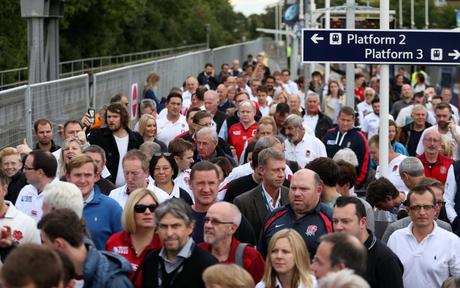
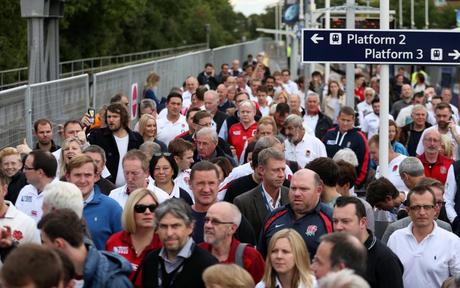
These plans suggest three groups of "potential transport interventions", split into short-term (one to three years), medium-term (three to five years) and long-term (more than five years) objectives. Jumping through the categories, there are plans for alternative walking routes and e-scooters, and then for river services - "while not expected to provide high capacity, could be pursued to provide a high quality fan experience" - and possibly redesigning or renovating the A316 roundabout.
The suggestions for the highest terminus depend on Transport For London's proposed launch of the new West London Orbital station before 2030, "the largest British railway station ever built, which is currently under construction and will therefore provide easy access to the Elizabeth Line, Central London. and HS2 to the north-west of the stadium", which will connect Hounslow Station to a new Old Oak Common station, along with another suggestion for a possible extension of the District Line.
The most eye-catching proposal, however, is for self-driving pods to take fans to Twickenham, although the report does not provide details on how the pods would function.
Diversity and introduction of baby changing facilities
One of the planned works is to significantly improve women's toilet facilities, shifting the current percentages from 90 percent men and 10 percent women to 65-35 percent, which in turn "shifts the quantum from minimal stadium rules to a more modern interpretation of entertainment. locations with a rest stop," the report said.
Improving accessibility and inclusivity is a particular priority, with "the main issue" being the location of wheelchair positions within the bowl for match viewing, with "the majority of wheelchair seating being on the ground floor (level 1) along the edges of the playing field. pitch". These positions are crucially uncovered and therefore do not follow the Green Guide recommendations for disabled seating requiring protection from bad weather.
The report notes that with "a robust equality, diversity and inclusivity strategy, the re-profiling work to the lower and mid levels will help address the availability of accessible seating across the stadium bowl", with these changes also meaning that accessible seating "will be accompanied with the inclusion of appropriate facilities". It also highlights the lack of disabled parking (blue badge), with Twickenham "using the adjacent Tesco car park to supplement the on-site parking facilities".
In addition, there are plans for sensory rooms, faith rooms, baby changing facilities - currently none at Twickenham Stadium, with one to be introduced towards the end of the next financial year - lowered counters at concessions and hearing loops at touch points.
Temporary move away from the head office
In terms of when the work could take place, the gap between the 2027 and 2028 Six Nations has been addressed given the lack of autumn internationals due to the 2027 Rugby World Cup. Matches for the Red Roses and men's warm-up matches for the Rugby World Cup, described as "events with a lower commercial value", would therefore be put on the road.
England opted to play their two 2023 home warm-ups at Twickenham, but in 2019 they played their fourth and final warm-up against Italy at St James' Park in Newcastle. Moving these games around the country while the work takes place would be a positive step for the growth of the game.
Finally, the report notes that Twickenham "will remain operational to the extent possible and able to host major events throughout the implementation of the PWF interventions. All prioritized PWF interventions will be completed and operational by 2031."
